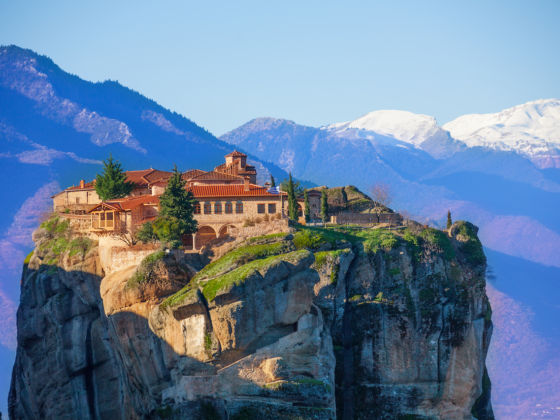There’s energetic Athens, the splendid islands, and then there are some of Greece’s most glorious treasures, located within easy reach of the capital city. So, if you don’t have a great deal of time in your hands, but you still wish to explore more of the country’s history, cuisine, and natural beauty, hop on a bus or board a ferry to set off for a day-long adventure.
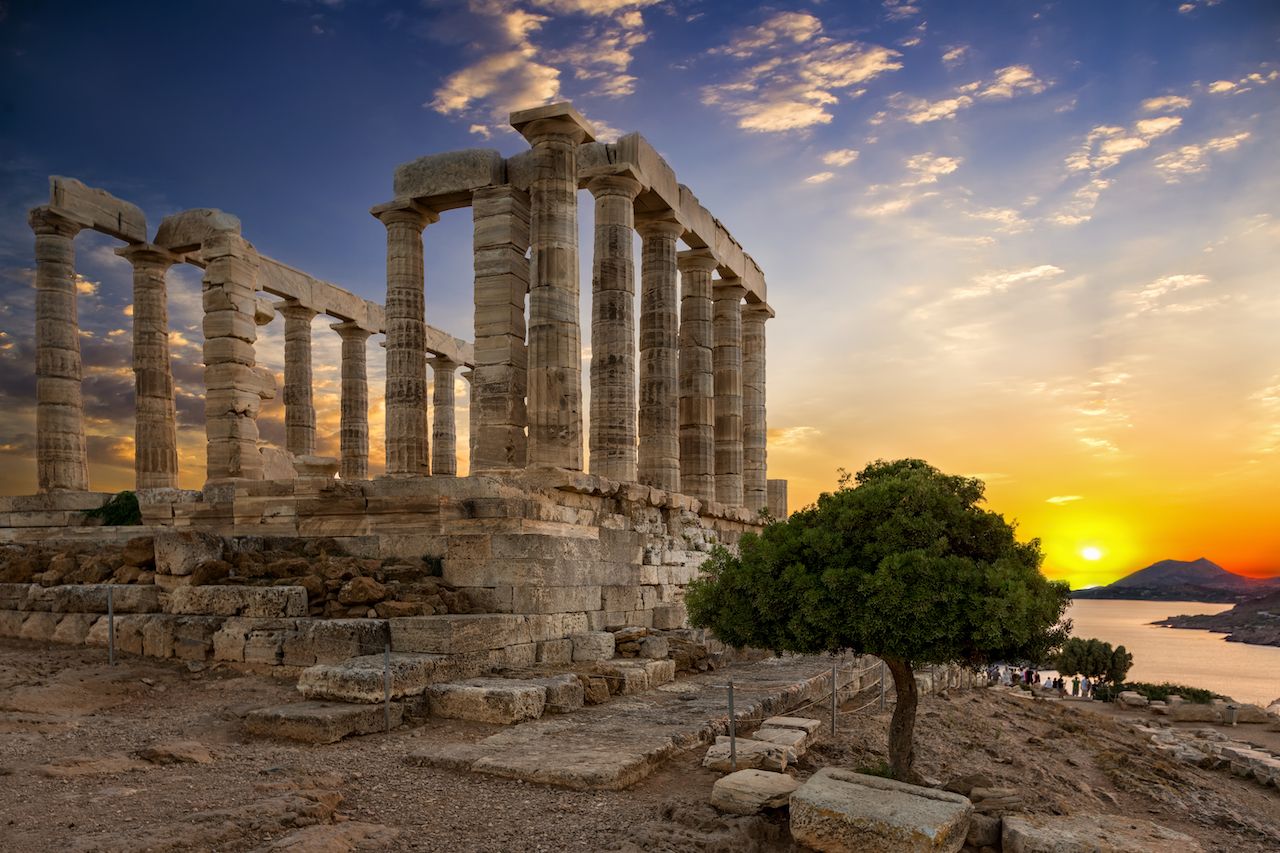
Photo: Sven Hansche/Shutterstock
The Temple of Poseidon — It’s not a coincidence that ancient Greeks picked this magnificent spot on Cape Sounio to build a temple for Poseidon, the ancient god of the sea. Located on the southernmost tip of Attica, about 40 miles away from Athens, the Temple of Poseidon overlooks the royal blue Aegean Sea from three sides. Built with marble, this major monument was also embellished with sculptures, some of which are in the Archaeological Museum of Lavrion, about six miles away, and the National Archaeological Museum of Athens.
The temple is 230 feet above sea level and overly exposed to sea breezes. So, if you visit during the autumn or winter months, dress warmly. For your summer itinerary, leave Athens early in the morning and cool off in the emerald waters of one of the Cape’s beaches, such as the unspoiled Legrena beach or the pocket-sized Kavokolones, just beneath the temple. Then, treat yourself to a fresh seafood lunch in any of the local tavernas on the coasts of Anavyssos or Thimari, and arrive at the temple just before sundown to capture an exquisite sunset.
Cape Sounio is one of the most accessible destinations from Athens. Catch the bus from the KTEL Bus Terminal on Alexandras Avenue close to Pedion Areos park, or from the city center, near Syntagma. To enjoy the route along the coastal suburbs of Glyfada, Saronida, and Anavyssos leisurely, rent a car, but be mindful of the multiple sharp bends.
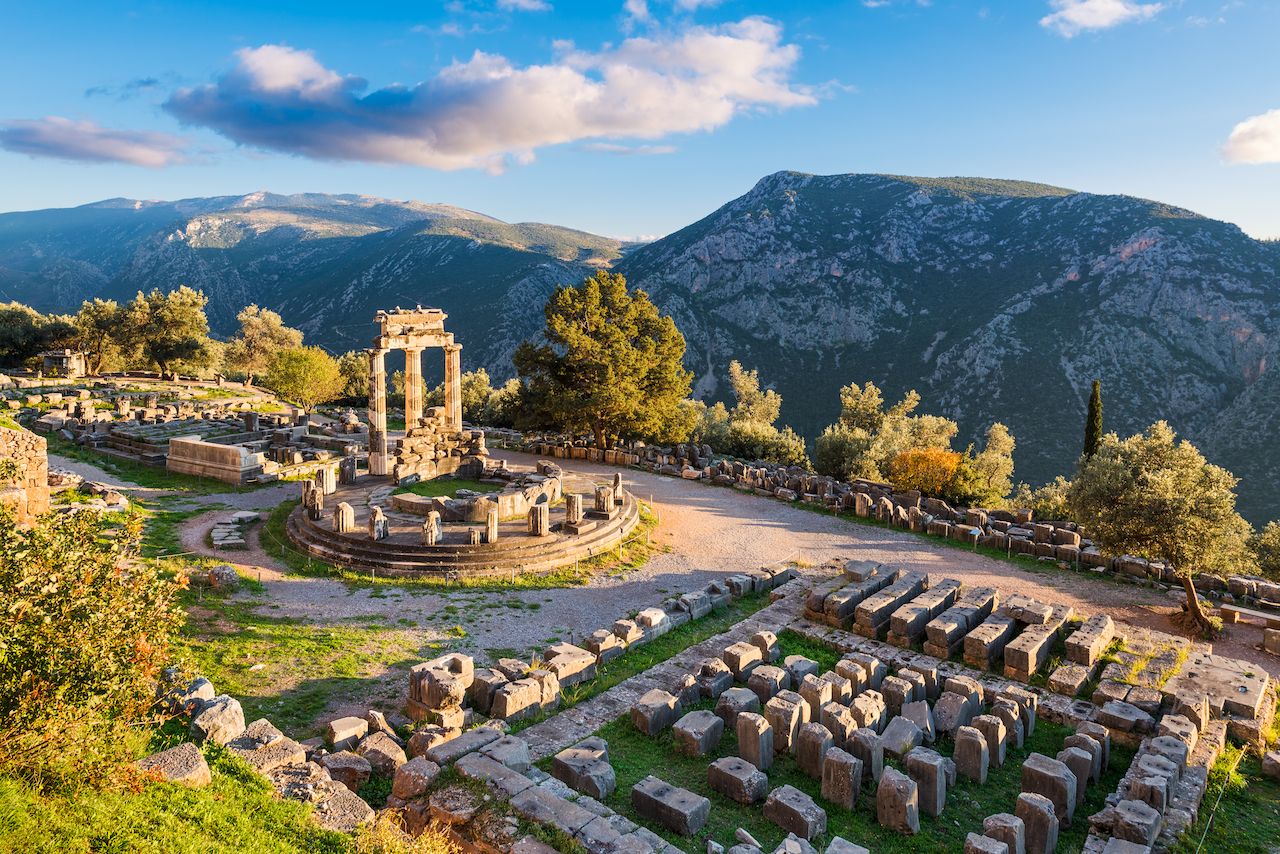
Photo: Mapics/Shutterstock
Delphi — A Unesco World Heritage site, Delphi is a complex of cultural and religious archaeological sites on the slopes of Mount Parnassus, about 100 miles northwest of Athens. Begin your tour at the Delphi Archaeological Museum to learn about the sanctuary’s history and activities. In the 14 exhibition rooms, you will see statues, friezes, pottery, bronze artifacts, and other offerings to the oracle of Pythia. Among the most impressive exhibits are the Charioteer of Delphi and the Sphinx of Naxos.
From the museum head to the Temple of Apollo and the Theatre of Delphi to enjoy uninterrupted views of the surrounding mountains and the valley. In the main site, you can also visit the Sanctuary of Athena Pronaia, the Castalian Spring, the Gymnasium, and the Stadium, where athletic and poetry competitions took place every four years in honor of Apollo. One ticket grants you access to all sites, including the museum. As with most archaeological sites in Greece, Delphi has different summer and winter opening hours, so make sure to check the official website website before planning your trip, or even call for the most up to date information.
It takes about three hours to reach Delphi from Athens. You can catch the bus from Liossion KTEL Station, which is a five-minute walk from the Agios Nikolaos green line metro station. If you are traveling by car, you can stop off at the mountain town of Arachova or the coastal town of Galaxidi on your way back to Athens. Arachova is a ski resort, so if you are visiting in the winter, make sure you are equipped with tire chains.
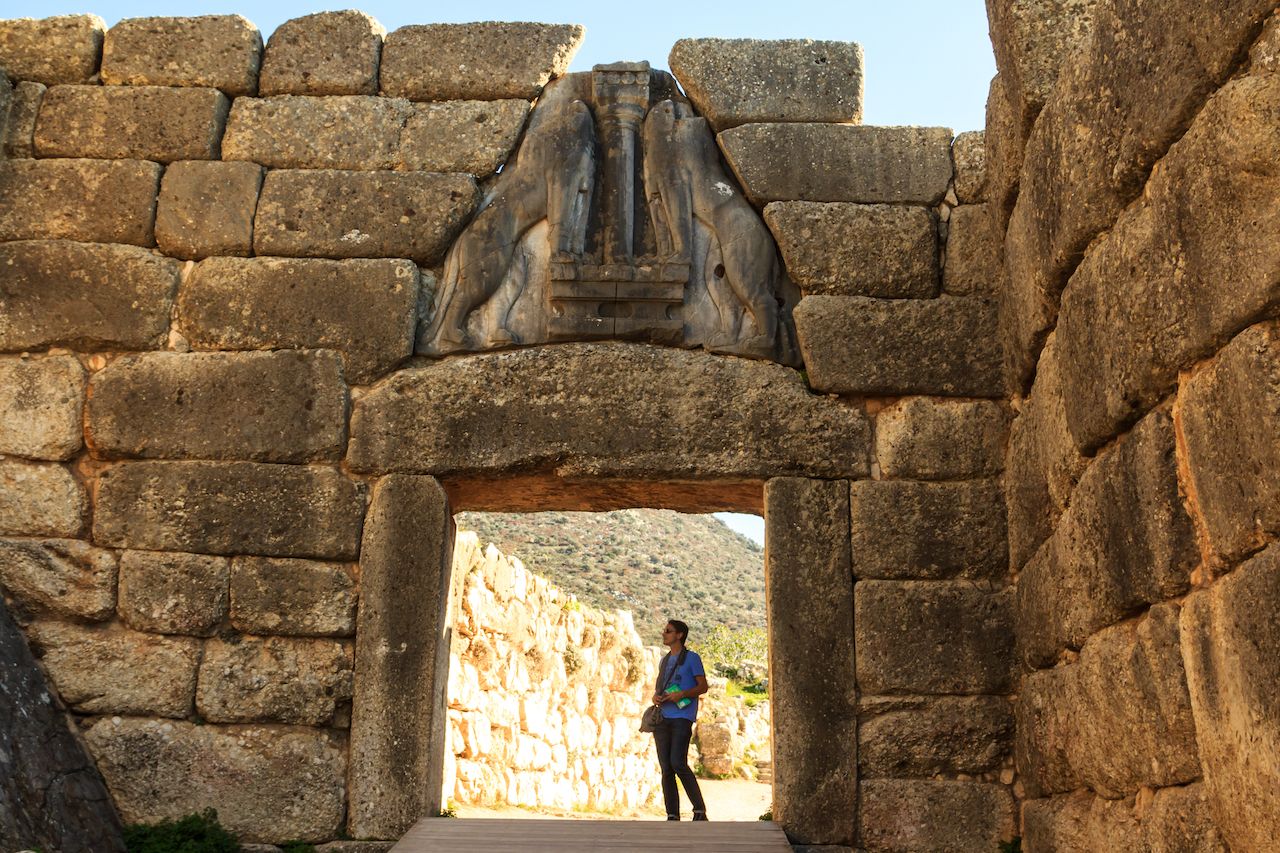
Photo: Ekaterina Mironcheva/Shutterstock
Corinth Canal, Mycenae, and Epidaurus — This trip in the Peloponnese region has a lot of sightseeing in one day, so snacks, water, a fully charged camera, and comfortable clothes are highly recommended. Make your first stop at the Corinth Canal, a narrow waterway (so small that modern ships cannot go through), which links the Gulf of Corinth to the Saronic Gulf. If you are into extreme sports, the canal bridge is one of Greece’s most popular bungy jumping spots.
Then head to the ancient city of Mycenae, which has given its name to an entire era between the 17th and 12th centuries BC, and is considered the birthplace of Greek civilization. For the Archaeological Museum of Mycenae and the outdoors sites, including the Lion Gate and the Treasury of Atreus, you pay for one all-inclusive ticket. Next stop is the ancient theater of Epidaurus, which is still used today during the annual summer Epidaurus Festival. It is known for its startling acoustics, which you can test by dropping a coin from the top row to the center of the stage.
In the same site don’t miss the Sanctuary of Asclepius, a UNESCO World Heritage site. During the 6th century BC, this was a healing residence dedicated to the Greek god of medicine. Even though there are direct buses from Athens to Epidaurus, this two-hour long journey is worth doing on your terms, so consider renting a car or joining a tour.
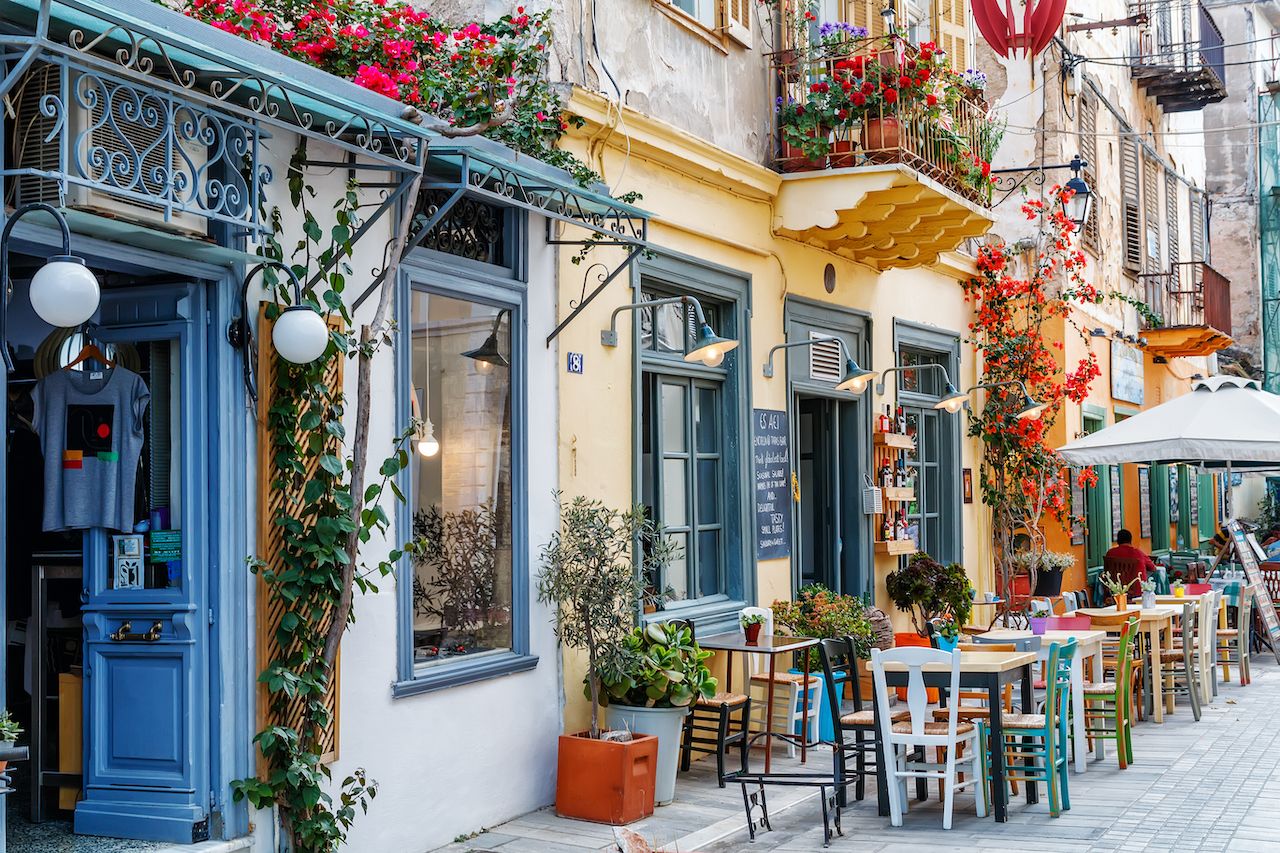
Photo: Solomakha/Shutterstock
Nafplio — Nafplio, modern Greece’s first capital city, is often acclaimed as the country’s most romantic destination. This seaside town, a manifestation of Venetian and Ottoman architecture, is one of Athenians’ most popular choices for weekend getaways throughout the year. So, if you are considering spending the night here, book in advance. For affordable accommodation stay at Vasilis Hotel. There are plenty of boutique hotels in the Old Town, such as 999, but if you are looking for a luxury retreat, then Nafplia Palace Hotel & Villas is second to none.
The city has three castles. In about half an hour you can climb the 999 steps to the top of Palamidi castle, and arrive just in time for the sunset over the Aegean Sea. Some steps are very slippery, so appropriate footwear is required. Beware if you are with kids, as there are many cliffs. Palamidi is also accessible by car. Bourtzi castle is on an islet, which you can reach by boat taxi within a few minutes from the harbor. The third and oldest castle of Nafplio is Acronafplia, above the Old Town with its maze of narrow streets and neoclassical mansions. Here, you will find authentic boutiques, cafes, and bars, all open late.
The pebbled beach of Arvanitia is winter swimmers’ favorite. In summer, the beach transforms into a tourist honeypot, with loungers and a bustling bar. Nafplio is for food lovers too. For fresh seafood go to Arapakos on the waterfront. For traditional Greek flavors and a location in the heart of the Old Town choose Tavern Vasilis, and for a modern setting and a skillfully twisted Greek cuisine try Menta bar-restaurant. For dessert, the traditional ice cream at Koustenis in the Old Town shouldn’t be missed, and for freshly-made pastries choose Kostopoulos bakery, off the beaten track.
Buses to Nafplio depart from Kifissos Bus Terminal every couple of hours, and the journey takes about two hours. If you decide to spend the night in Nafplio, you can integrate Mycenae and Epidaurus into this trip.

Photo: Oleg Znamenskiy/Shutterstock
Marathon — Twenty-six miles northeast of Athens, Marathon is known as the site of one of the most significant battles in ancient Greece — between the Greek and Persian armies in 490 BC — and for being the birthplace of the marathon run. On this trip, you can see the Archaeological Museum of Marathon, the Run Museum, and the human-made Lake Marathon, which was the main water supplier of Athens until the late 1950s. Now, the lake is an important wetland and a unique natural habitat.
Relax at the Fragma cafe with a hot beverage and snacks or cocktails and dinner. In the summer, combine your visit with Schinias beach, which is close by. Keep in mind that this is the most popular beach on the east coast of Attica and a favorite windsurfing spot, so on hot summer weekends, it’s almost impossible to find parking space or free deck chairs unless you show up before 9:00 AM. During these busy days, don’t leave your personal belongings unattended. This is an ideal beach for families with young children and inexperienced swimmers, as the water is waist-high for the first 160 feet from the coast.
During the colder months, you can visit the National Park of Schinias instead, which consists of wetland, a pine forest, and the Olympic Rowing Center. Around August, when the heat is at its peak and the winds strong, the park may be closed due to the threat of forest fires. To reach the historic city of Marathon, you can take the bus from KTEL Bus Terminal. But if you want to have freedom of mobility and visit the beach or the national park, having your car is the best option.
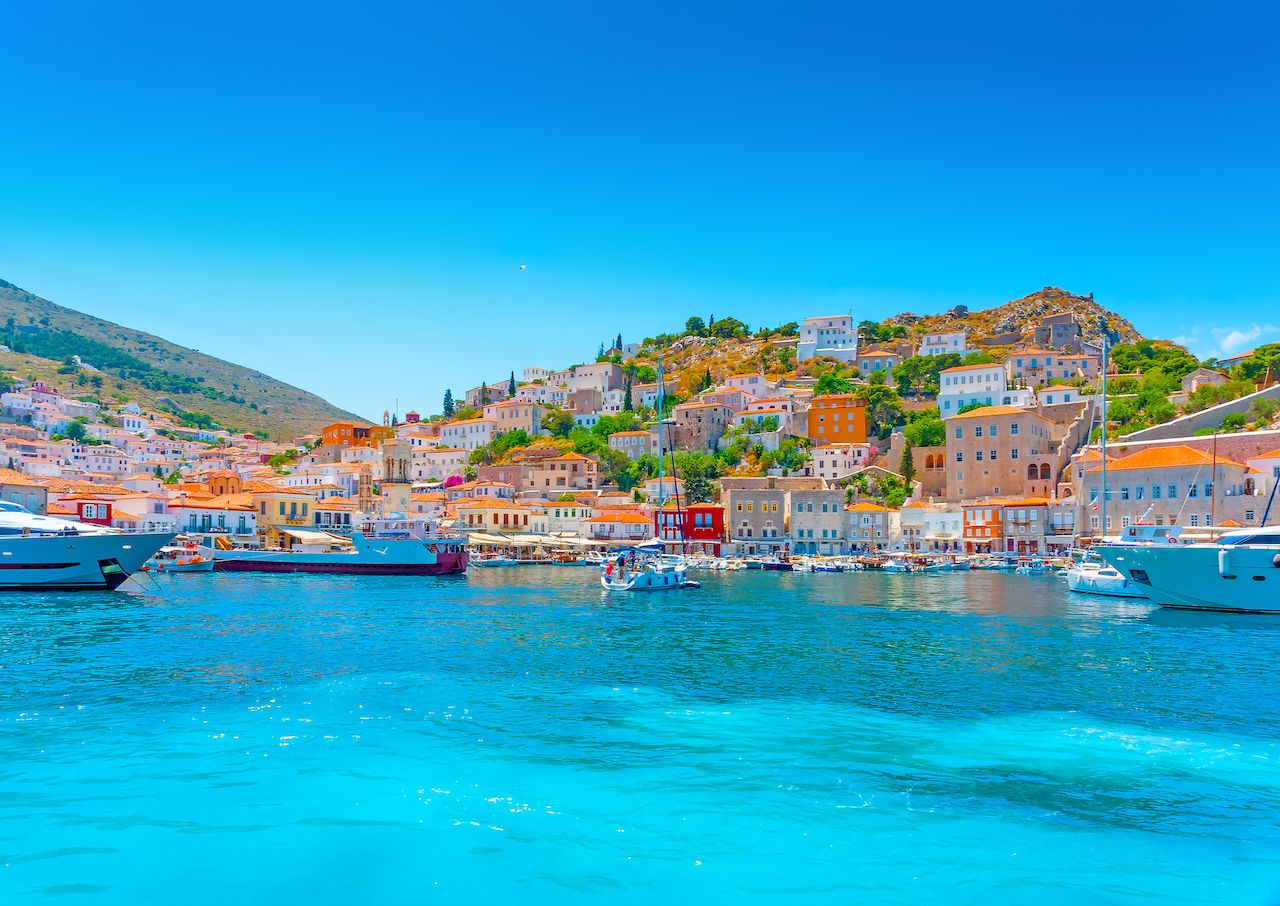
Photo: imagIN.gr photography/Shutterstock
Poros, Hydra, and Aegina islands — Of Greece’s 6,000 islands, just over 200 are inhabited, and each has unique landscape, cuisine, and traditions. If you want a taste of Greek island life, but you can’t go as far as Santorini, Crete, or Mykonos, explore some of the closest islands to Athens. While each of these islands could be a trip of its own, we list them together here, since in the summer, many tour operators offer a day-long island-hopping cruise.
If you’re just headed to Poros, it takes about an hour on the ferry or less than 45 minutes on the hydrofoil to reach Piraeus, Attica’s port city, at the end of the green metro line. The port of Piraeus is vast, so you may want to arrive there earlier to give yourself enough time to buy your ticket and find the E8 departure gate. Also, bear in mind that vessel departures are much more frequent from May to September. Poros isn’t cosmopolitan, making it an ideal choice for travelers on a budget.
Hydra is one of Greece’s most sophisticated islands, also known for being vehicle-free. Here you will see mansions that once belonged to great naval families and jet-setters who arrive on their yachts. The rocky scenery means there are no beaches, but if you’re an avid swimmer, you can still dive into the azure waters. The island is also a haven for artists, with its many hipster bars, boutiques, and artists’ residences and studios. Whether you are looking to start your day with a hearty breakfast or lighten up your night with a signature cocktail, The Pirate Bar in the heart of the port is a landmark. To reach Hydra, get the hydrofoil from Piraeus. The journey lasts for about an hour.
Aegina is one of Greeks’ favorites for short summer expeditions due to its proximity to Athens and its affordable accommodation and dining prices. Being the home to a big orthodox monastery, Aegina is a famous pilgrimage destination among Christians. The island has great archaeological value too. The Temple of Aphaia, one of the country’s most ancient sites, is here. Archeologists assume that, along with the Parthenon in Athens and the Temple of Poseidon, it formed sacred triangle on the map. Remember to take back home the renowned pistachios. You can reach Aegina from Piraeus either by ferry (a little over an hour) or hydrofoil (40 minutes).
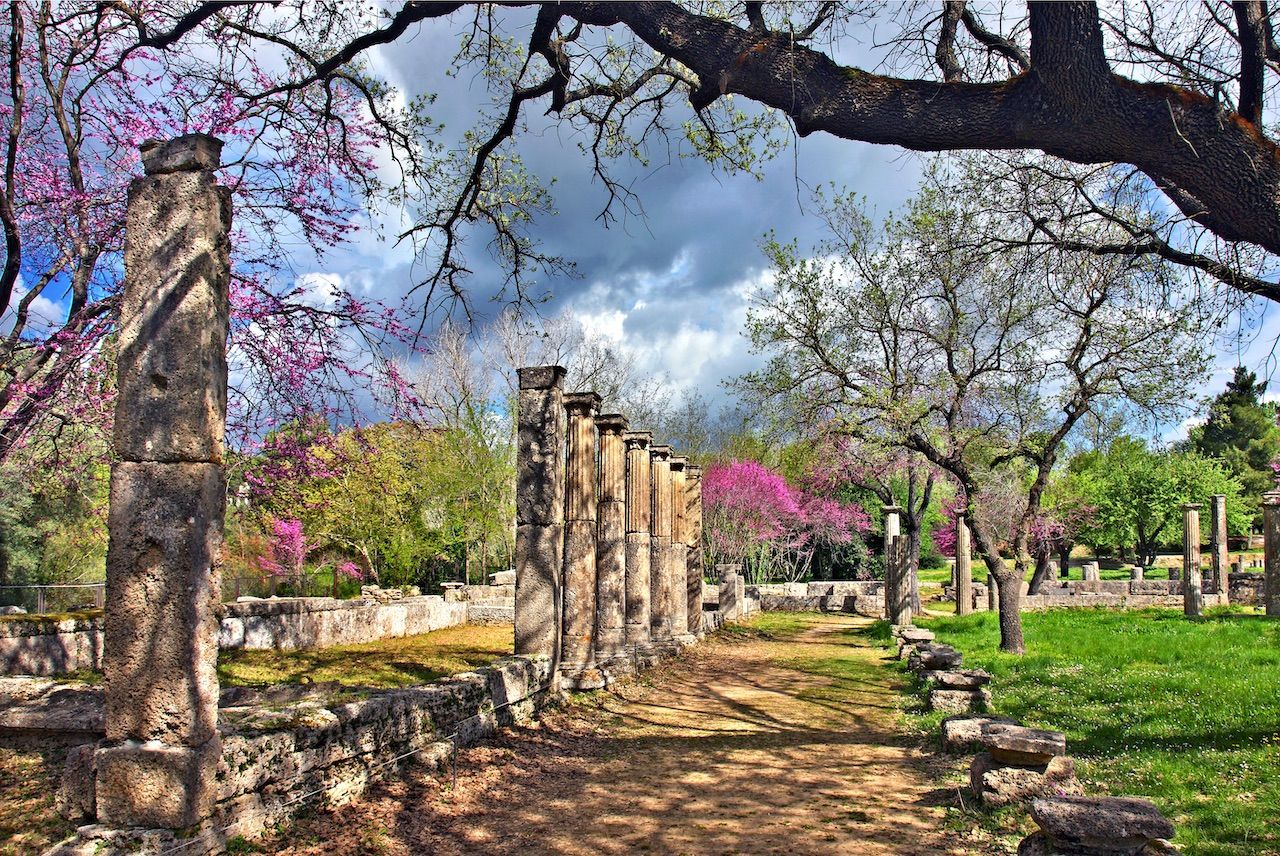
Photo: Heracles Kritikos/Shutterstock
Ancient Olympia — Ancient Olympia in the western Peloponnese is the origin of the Olympic games. At about a four-hour drive from Athens, this is a much longer day trip, but you won’t regret the extra effort. A 443-foot-tall chryselephantine statue of Zeus, known as one of the seven wonders of the ancient world, used to stand here until it was destroyed in the 5th century AD.
Go to the Archaeological Museum of Olympia to see the renowned marble sculpture of Hermes of Praxiteles, an ideal representation of classical beauty and technique. Also, the museum has the richest collection of copper objects in the world. Visit the stadium and the Temple of Hera, which may have lost much of its glory now, but it is one of the oldest Greek monuments. Every two years at the temple’s altar, the Olympic flame is lit to start its journey around the world before it reaches the host country of the Winter or Summer Olympics. Note that the opening hours of the archaeological site differ from summer to winter. A one day-ticket will give you access to the site with over 30 monuments, as well as to three different museums.
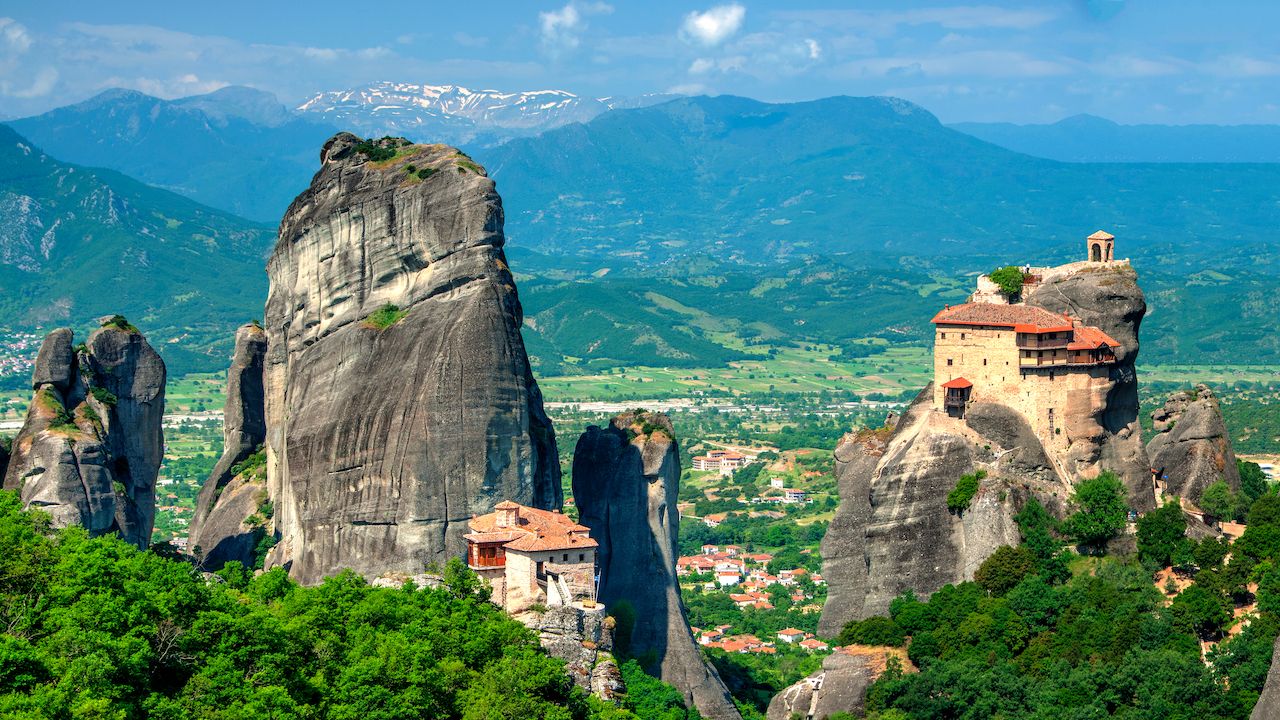
Photo: Krishna.Wu/Shutterstock
Meteora — Meteora, a UNESCO World Heritage site, comprises gigantic rock pillars, on the summits of which are six operational, and over 10 unoccupied, monasteries. Located in Thessaly, in central Greece, Meteora is 250 miles away from Athens, about a four-hour drive.
Owned and managed by the Greek Orthodox Church, the monasteries are open to the public on a rotating basis. The Monastery of Great Meteoron is the biggest and oldest one, but only a couple of monks live here permanently. The skulls of former monks are stored in a room open to visitors, so prepare yourself for the macabre display. Spending a couple of hours in the monastery should be enough to see the life of the monks and get a feeling of solitude.
If the weather conditions permit, you can hike on easy to medium-level forestry trails, suitable for the whole family, which link the monasteries to each other. Experienced hikers can tackle more difficult paths that may require rock climbing gear. The most secure way to explore the nature of Meteora on foot is via organized tours, which may offer other activities too, such as rafting, biking, and abseiling. For local cuisine, souvenirs, and houses made of stone, go to the picturesque preserved village of Kastraki, at the bottom of Meteora. If you decide to visit Meteora by bus or train, consider combining it with Delphi on a two-day trip.
